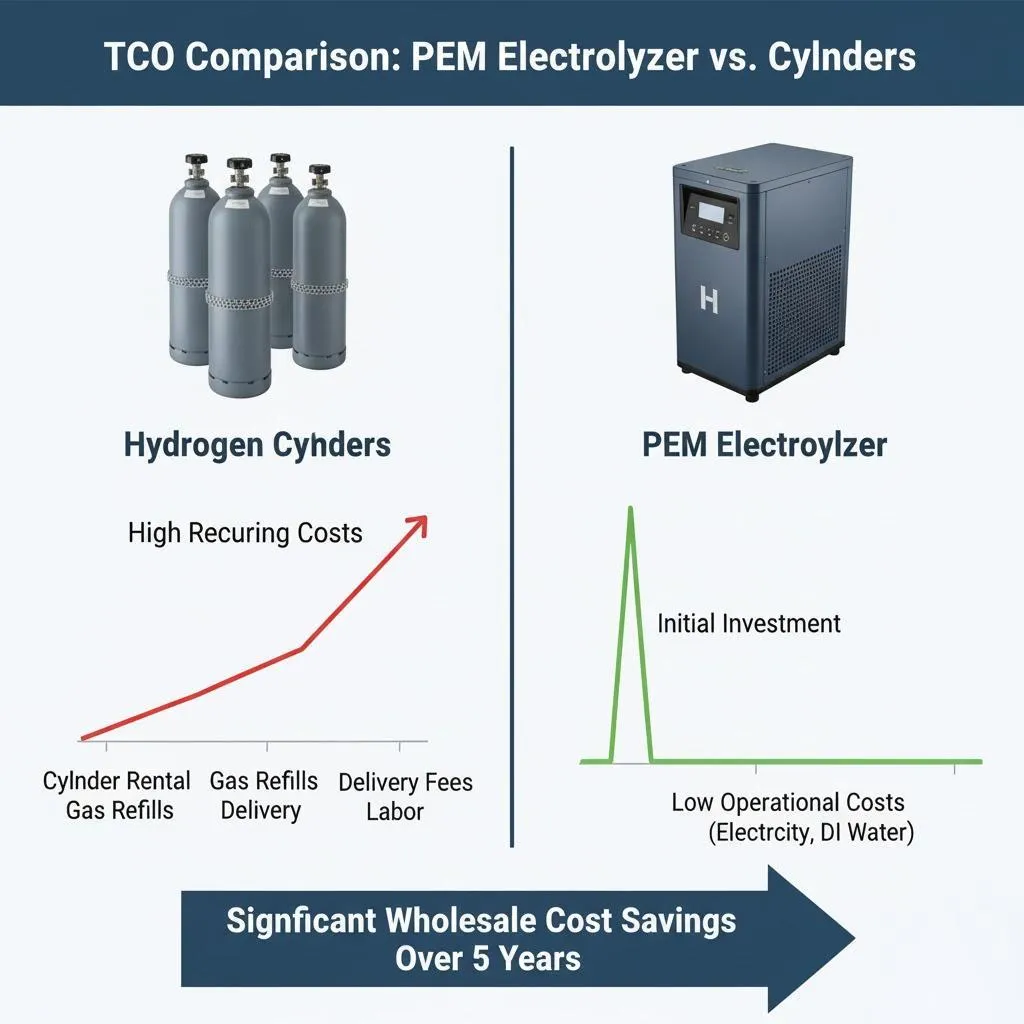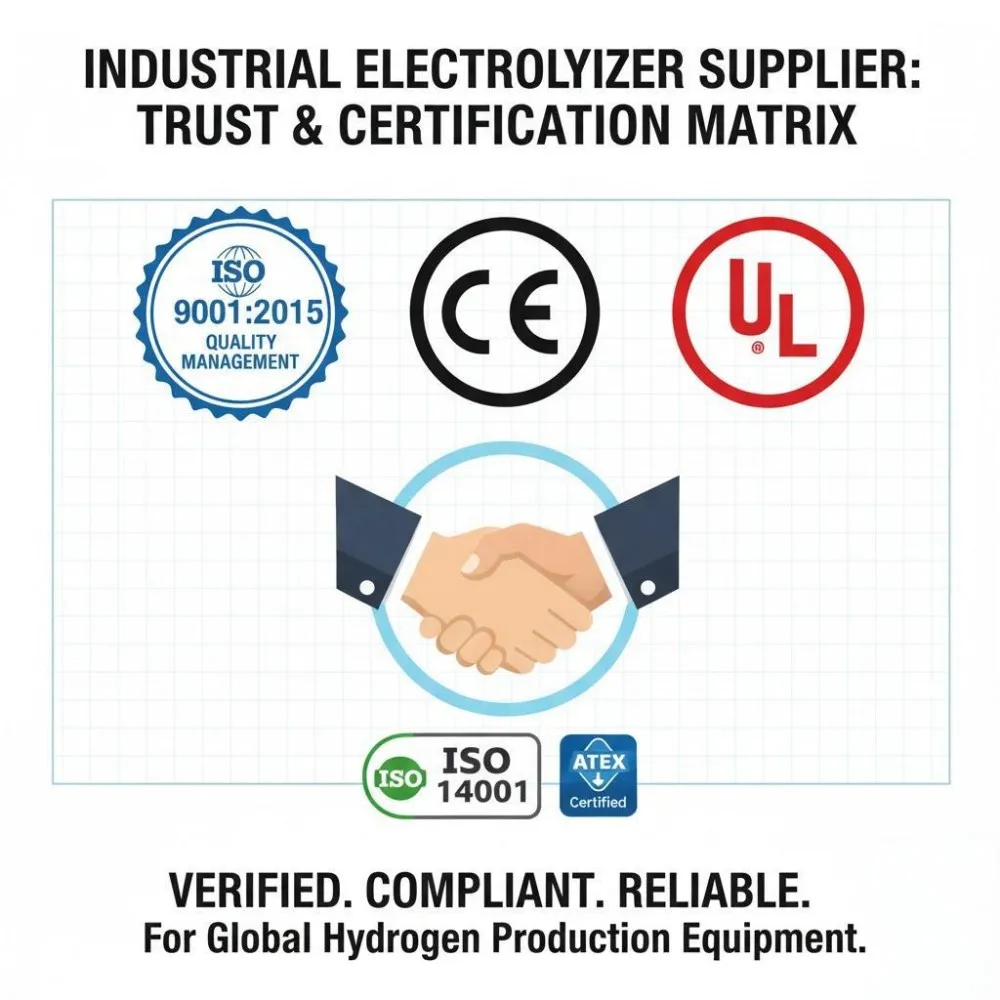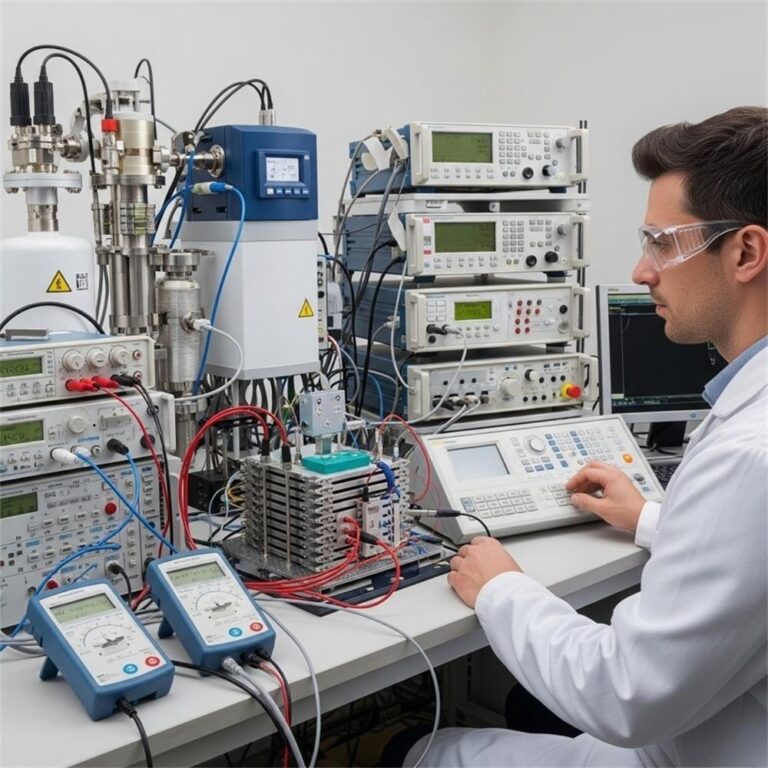Introduction: The Growing Need for Energy Storage
As the world transitions to renewable energy sources like solar and wind, the demand for reliable and efficient energy storage solutions is skyrocketing. One of the biggest challenges in renewable energy is its intermittent nature—solar panels don’t work at night, and wind turbines stop when the air is still. To balance supply and demand, energy must be stored and deployed when needed. That’s where hydrogen comes into play.
Hydrogen, particularly green hydrogen produced via pure water electrolysis, has emerged as a game-changer in the energy sector. Unlike conventional methods that rely on fossil fuels, water electrolysis uses electricity to split water into hydrogen and oxygen, producing zero carbon emissions.
Among various system sizes and outputs, 4 Nm3/h pure water electrolysis systems are gaining traction for their ideal balance between output and efficiency. These systems can produce 4 normal cubic meters of hydrogen per hour, making them suitable for small-to-medium-scale energy storage needs, from industrial use to remote community applications.
Understanding Pure Water Electrolysis Technology
The Science Behind Water Electrolysis
Water electrolysis is a chemical process where electrical energy splits water (H₂O) into hydrogen (H₂) and oxygen (O₂):
2H₂O (l) → 2H₂ (g) + O₂ (g)
This reaction requires direct current (DC) electricity and typically involves two electrodes—an anode and a cathode—immersed in water. As electricity flows through, hydrogen bubbles form at the cathode and oxygen at the anode.
What Makes Pure Water Electrolysis Unique?
Unlike alkaline or PEM (Proton Exchange Membrane) systems, pure water electrolysis uses highly purified water without adding electrolytes or chemicals. It provides:
- High-purity hydrogen output, ideal for fuel cells and industrial processes.
- Lower maintenance needs due to reduced corrosion.
- Environmentally friendly operation with no chemical byproducts.
This method is particularly well-suited for sensitive applications where hydrogen purity is crucial.
Comparison with Other Methods
| Method | Electrolyte | Purity Level | Maintenance | Efficiency |
|---|---|---|---|---|
| Alkaline Electrolysis | Potassium hydroxide | Medium | Moderate | Good |
| PEM Electrolysis | Proton exchange | High | High | Very Good |
| Pure Water Electrolysis | Ultra-pure water | Very High | Low | Excellent |
Key Components of a 4 Nm3/h Pure Water Electrolysis System
To achieve efficient hydrogen production, the 4 Nm3/h system comprises several integrated components:
1. Electrolyzer Stack
This is the heart of the system where the electrochemical reaction occurs. It contains:
- Electrodes (anode and cathode): Typically made of platinum, nickel, or titanium.
- Membrane: Separates the gases and allows ion exchange.
- Electrolyte: In this case, purified water.
High-quality materials are crucial for ensuring long-term durability and safety.
2. Water Purification System
Pure water is essential for preventing contamination and extending equipment life.
Stages include:
- Pre-filtration: Removes large particles.
- Reverse Osmosis (RO): Eliminates most dissolved solids.
- Deionization (DI): Strips remaining ions to achieve ultra-pure water quality.
3. Power Supply & Control System
The system must deliver a stable DC current to maintain consistent electrolysis.
- Power source: Converts AC to DC.
- Control unit: Monitors parameters like voltage, current, temperature, and pressure. It ensures optimal operation and prevents overloads or system faults.
4. Gas Separation & Drying Unit
Hydrogen and oxygen must be separated and dried before storage or use.
- Gas separators: Ensure no cross-contamination between H₂ and O₂.
- Dryers: Remove residual water vapor to enhance storage safety and fuel cell compatibility.
Integrating 4 Nm3/h Electrolysis with Renewable Energy Sources
Combining electrolysis with renewables creates a sustainable loop:
- Solar or Wind Energy powers the electrolysis unit.
- Excess electricity from renewables is stored as hydrogen.
- Hydrogen can be converted back to electricity or used as fuel.
Overcoming Intermittency
Since renewable generation fluctuates, integration strategies include:
- Battery banks for buffering.
- Smart inverters for energy flow management.
- Hybrid systems combining solar, wind, and battery storage.
Real-World Applications
- Europe: Hydrogen hubs in Germany and the Netherlands power electrolysis with offshore wind farms.
- Asia: Japan’s hydrogen refueling stations are increasingly integrating solar-powered electrolysis units.
Efficiency Metrics and Performance of 4 Nm3/h Systems
Key Performance Indicators (KPIs)
| Metric | Description |
|---|---|
| Energy Consumption | Typically 4.5–5.5 kWh/Nm3 of hydrogen |
| Current Density | Indicates rate of hydrogen production (0.5–2 A/cm²) |
| Faradaic Efficiency | Measures how effectively electrons produce hydrogen |
| System Lifetime | Often exceeds 50,000 hours with proper maintenance |
Performance Factors
- Water quality: Poor water reduces membrane life.
- Operating temperature: Optimal around 60–80°C.
- System pressure: Pressurized systems may increase storage efficiency.
Case Studies: Real-World Applications of 4 Nm3/h Electrolysis
1. Industrial Hydrogen Production
A chemical factory in South Korea uses 4 Nm3/h electrolysis for on-site hydrogen, cutting logistics costs and emissions.
2. Remote Energy Storage
A research station in the Arctic integrates wind and 4 Nm3/h electrolysis to store hydrogen during high winds, ensuring energy during outages.
3. Hydrogen Refueling Station
In California, a micro-refueling station for fuel cell cars uses solar panels and pure water electrolysis to deliver clean fuel.
4. Power-to-Gas Projects
Germany’s power-to-gas pilot plants use small-scale electrolysis to convert excess grid electricity into storable hydrogen.
The Future of Pure Water Electrolysis for Energy Storage
The outlook is promising, with ongoing innovation in materials, automation, and integration:
- Cost reduction: Improved membranes and mass production are lowering CAPEX.
- Efficiency gains: AI-based controllers optimize input vs. output.
- Scalability: Modular systems allow expansion from 4 Nm3/h to multi-MW capacities.
This technology will play a vital role in global decarbonization and the hydrogen economy.
Frequently Asked Questions (FAQs)
1. What does 4 Nm3/h mean in electrolysis systems?
It refers to the production capacity—4 normal cubic meters of hydrogen gas per hour at standard temperature and pressure.
2. Is pure water electrolysis more efficient than alkaline systems?
Yes, it typically offers higher efficiency, lower maintenance, and cleaner hydrogen output.
3. What kind of water is used in pure water electrolysis?
Ultra-pure, deionized water is used to prevent system damage and ensure high hydrogen purity.
4. Can 4 Nm3/h systems be scaled for industrial use?
Yes, multiple units can be run in parallel to meet higher demand, offering flexibility and scalability.
5. How is hydrogen stored after production?
It can be stored in pressurized tanks, metal hydrides, or converted into ammonia or synthetic fuels.
6. Are there safety risks with hydrogen production?
With proper design, control systems, and ventilation, hydrogen electrolysis systems are safe and widely used.
Conclusion
The 4 Nm3/h pure water electrolysis system represents a scalable, efficient, and eco-friendly method for producing hydrogen—an essential component of our sustainable energy future. By combining cutting-edge electrochemical engineering with renewable energy, this technology offers a compelling solution to the energy storage puzzle. Whether for industrial use, transportation, or remote power generation, it paves the way for a resilient and carbon-free energy ecosystem.







